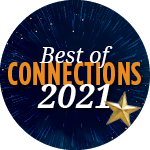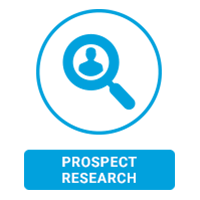Relationship Management
Building a New Portfolio Management Program: A Case Study
By Alison O'Connell and Devon Rutz and Lindy Speakman | April 29, 2021

Editor's Note: This article is featured in Best of Connections 2021. Read Apra Editorial Advisory Committee Chair Jessica Balsam's editor's message to learn more about the top articles of the year.
As prospect researchers, we are proficient at meeting tight deadlines and learning new skills on the fly. The research and prospect management team at Lehigh University recently got first-hand experience in this when we were challenged to build a new portfolio management program, which involved analyzing all frontline gift officer portfolios three times per year. The first round of portfolio analysis included the prospect management and research team meeting with each officer and their supervisor to determine whether each donor in their portfolio was still a viable prospect, needed further research or could be moved to the unassigned pool. In addition to launching the first round of these portfolio review meetings, we also had to build four new prospect portfolios for gift officers whose regional assignments had changed ― in just two weeks.
None of the three researchers on our team had built portfolios from scratch before, and the frontline fundraising team requested a tight turnaround time, which meant minimal time for training. Therefore, this project was truly a collaborative effort, and we relied on each other and our relationship with the frontline team to produce the portfolios. We learned a lot about prospect research’s role and how we contribute to fundraising success. The project also gave us a chance to directly impact gift officer activity and proactively drive frontline fundraising. We wanted to share our experience because we learned lessons that we believe are valuable to others, especially researchers that are building new skills in the area of portfolio development.
Portfolio Building Process
The four new portfolios needed an average of 125 prospects per portfolio. This was the first time any of us had tackled a project like this, and we quickly realized that it would require a variety of skills ― analytical and data management skills, of course, but also creativity and a high-level understanding of the fundraising industry. In order to achieve our goal of finding at least 500 viable new prospects, we not only had to mine our vast database for “hard” data points like job titles and public assets, but we also had to use and develop our “soft” skills, such as using our judgement to determine the likelihood of a prospect giving to Lehigh.
Our team of three met to discuss the project and our overall game plan. We knew that each of us would be portfolio building for the first time and would be learning on the spot. While we were each assigned to a specific portfolio (one of us was assigned to two gift officers who were sharing a region), between the learning curve and the time constraint, we knew we would need to rely on each other and collaborate if we were going to be successful. Our supervisor walked us through the general steps and how-tos of portfolio building, and then it was time to get our hands dirty.
Quick-Start Guide to Portfolio Building
1. Hold a meeting with the gift officer to learn about the type of prospect being sought (capacity rating, region, interests, etc.) and to determine how many prospects are needed for the portfolio. All parties should agree on the criteria being used to build the portfolio.
2. Pull a list of prospects based on the agreed-upon criteria.
3. If the amount of data returned is too much, prioritize certain criteria over others based on the meeting with the gift officer. For instance, financial capacity, last gift date, volunteer status or lifetime giving amount.
4. Make sure all prospects being assigned have up-to-date information and capacity ratings.
5. Make the assignments, keeping in mind either your institution’s or industry standard best practice portfolio size guidelines.
|
That still returned more than 20,000 names per officer. This could have easily been overwhelming, but we put our heads together and figured out how to filter the list further. Some criteria we used to narrow the list included removing outdated or unvalidated capacity ratings, keeping only current and previous year’s donors, and removing any prospects marked as “no interest in giving” or “no response.” This created a much more manageable list to mine for prospects.Each of us then met with the gift officer we were assigned to and discussed what type of prospects they were looking for in their portfolio. Three of the new portfolios were for major gift officers, and one was for an annual fund officer. These discussions were extremely helpful and saved us a lot of time by narrowing the list of criteria by which we filtered the database ― capacity rating, gift officer qualified rating, donor status, lifetime giving and job title. We then applied that criteria to the tens of thousands of unassigned regional prospects in our sizeable database.
Even after filtering the data with the additional criteria, we still had to find the “best” prospects to assign each gift officer. For the major gift officers, we were looking for prospects that not only had the right financial capacity, but also had a good relationship with Lehigh and were likely to personally engage with a gift officer. In order to determine the likelihood of gift officer success with a prospect, we efficiently reviewed each donor’s record, focusing on contact reports and past giving. The research team frequently asked each other for feedback and advice on prospects, and we quickly learned a lot about the creative side of portfolio building.
For the annual fund officer, the prospect profile was a little different; we learned to look for prospects who make general gifts, give on a regular basis and/or do not require the engagement a major gifts officer would provide. We also reviewed giving histories to look for affinities and briefly reviewed contact reports. Ultimately, we had to look beyond the hard data and understand that donors have a variety of motives for giving. We had to be confident in our expertise and judgement in including each prospect in the portfolio.
Overall, this project was a time crunch, but we managed to assign at least 100 prospects that we were confident in to each gift officer. Through collaboration, flexibility and our willingness to learn both technical and creative skills on the fly, we showcased prospect research’s expertise and contributions to fundraising.
Lessons Learned
-
It’s important to trust and rely on your team. We were all learning these skills, and we often asked each other for input and guidance. Additionally, partnering with the frontline fundraisers was critical and our positive working relationship with them was crucial to the project’s success.
-
While technical skills are important to our work, research is more than just the cold hard facts. We need to listen to our gut and assess a prospect’s assets beyond dollars and cents. Creativity is a necessary component of our work.
-
Our database is a fantastic and vast resource that can be used in a variety of ways to unearth prospective donors. Because of the wealth of data, it was important to keep our work organized and keep notes on why and how we pulled the data so that we could explain our process to gift officers and others later.
-
It is important that we understand our institution’s fundraising goals and how gift officers work with prospects. Understanding the difference between major gifts and the annual fund, for example, helps us determine data points and better informs our work.
-
Researchers are a crucial and integral part of the fundraising process and our expertise should be trusted and sought after. This project directly affected frontline fundraisers’ work, and while we value their feedback, the success of the project was ultimately on us and our capabilities. We need to present ourselves as the experts on this work and demonstrate to frontline fundraisers that we are valuable partners.

This article relates to the Prospect Research domain in the Apra Body of Knowledge.
Learn more about the authors on the Connections Thought Leaders Page.

Alison O'Connell
Development Researcher, Lehigh University
Alison O'Connell is a development researcher at Lehigh University in Bethlehem, Pennsylvania. She has worked in the development field for six years and in prospect research for a year and a half. She received her bachelor’s and master’s degrees in history from Lehigh University.
Devon Rutz
Development Researcher, Lehigh University
Devon Rutz is a development researcher at Lehigh University in Bethlehem, Pennsylvania. She has been in the field of prospect research for two and a half years. Prior to joining the research community, she worked in publishing. She earned her bachelor's in professional writing and master's in English from Kutztown University of Pennsylvania.
Lindy Speakman
Development Researcher, Lehigh University
Lindy Speakman is a development researcher at Lehigh University in Bethlehem, Pennsylvania. She has worked in the field of prospect research for two years. She received her master’s in English from Kutztown University and her bachelor’s in English from Elizabethtown College.